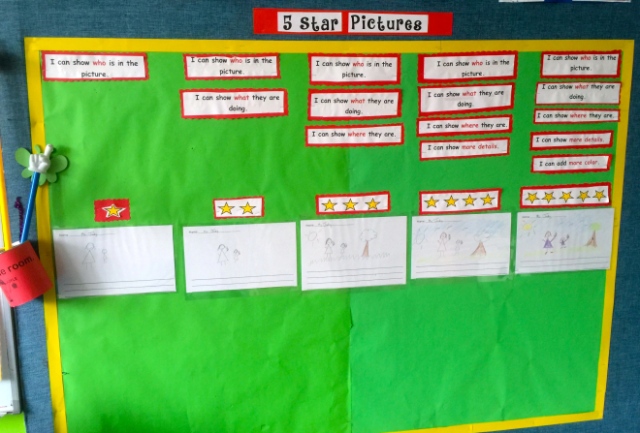Oh to Capture Thoughts and Ideas: The Writing Life!
Recently I had someone grilling me about writing journals, and I was deeply surprised and amused since we have so many notebooks and journals for our students that they can’t even fit into their cubbies. And yes, sure, it’s a common practice to have students hold their ideas in a journal, but I believe writing is thinking; and sometimes our thoughts are trivial and sometimes they are elaborate, they come into the mind through questions, phrases, lists, arguments, epiphanies, and regrets. Our writing life is a bit like that too and a journal is only one way to get a hold of these ideas. 
As a 1st grade teacher, I feel incredibly anxious ensuring that our students feel confident as readers and writers. I want them to stare at a blank sheet of paper and be able to imagine how it might be filled with words, taking the pencil into their hands and devouring the empty space with their ideas. I want them to stand back and experience reverence for words when they look at a poem or examine the pages of a book. But sometimes I feel incredibly challenged by how daunting the task is: to not only make students competent with reading and writing skills but develop these attitudes towards literacy that motivate them to choose writing. I want them to have agency, not shove writing down their throat, demanding that they create so many perfectly spelled and punctuated sentences a day, a week, a month. I want them to be true writers: reacting to life and wanting to capture its joys and downturns with words and pictures so that they may communicate their experience with others.
Also, I want them to make connections between our literacy block and our time spent in Math and Inquiry. I want them to know that lines on a paper are an invitation to share their thinking, whether it be with words or numbers or both.
Maths is a subject of words and pictures not just numbers. -Lana Fleitzeig-
I want them to write down a question on their paper and stare at it, considering the  various ways that one might approach its answer. I want them to think, then reach for a book, a website, a magazine or ask someone so that their curiosity can be nourished by the support of other human beings. And then realize that they too have something to share, which makes them reach for the pencil or tap on a keyboard. I want their minds overcome by the desire to write.
various ways that one might approach its answer. I want them to think, then reach for a book, a website, a magazine or ask someone so that their curiosity can be nourished by the support of other human beings. And then realize that they too have something to share, which makes them reach for the pencil or tap on a keyboard. I want their minds overcome by the desire to write.
So, just like in real life, students may create lists or books, use sticky notes or scraps of paper, whatever they can get their hands on, including their writing journal to document their ideas and moods. Today it may be a sign-up sheet for a game of tag, but tomorrow it may be a wonderful tome on Cheetahs. Who knows what the heart of a child wants to share with others! But for them to see themselves as writers, no matter how prolific they may be inside their journals, is more important than any spelling and grammar lesson that I may give them. Perhaps it is more important to ask students not how much or how well you wrote today, but did you write today?–not because I am your teacher and I have educational aims that you must reach to be “meeting expectations” but because your soul demands expression and I am here to support you answer its call.
So, although the mechanics of syntax and grammar are my learning goals for the day, my real overarching goal is for students to naturally and organically write, to feel the pull and lure of an empty space that can be filled with their ideas.
I want them to live a writer’s life.
Developing learners as leaders is my joy! I am committed and passionate International Baccaluearate (IB) educator who loves cracking jokes, jumping on trampolines and reading books. When I’m not playing Minecraft with my daughter, I work on empowering others in order to create a future that works for everyone.

 or just an over consumption of content?
or just an over consumption of content?



